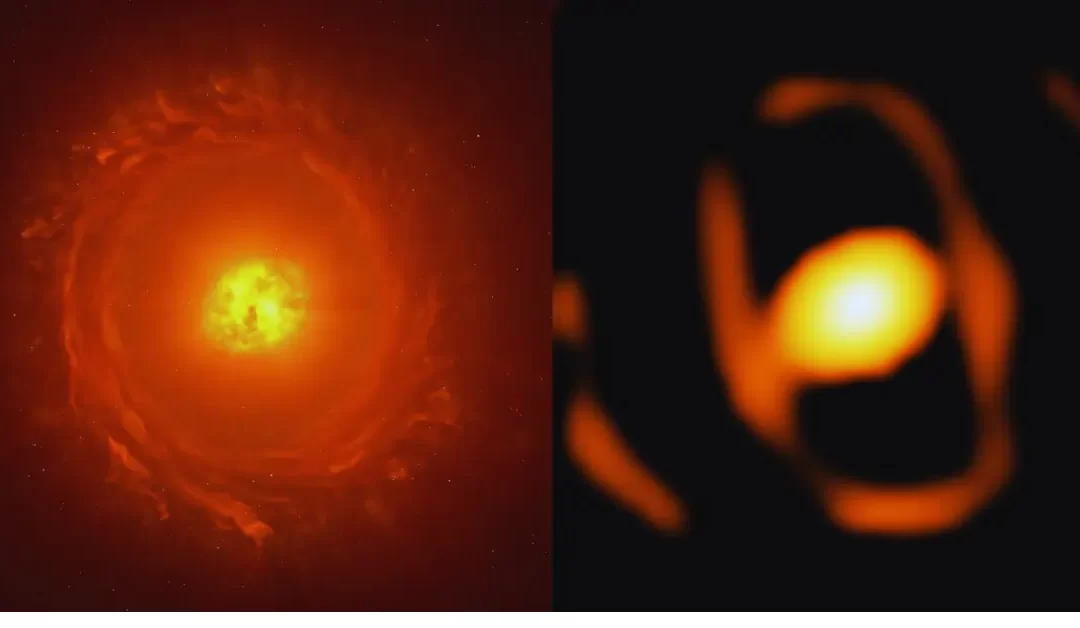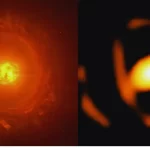Astronomers have captured the first close-up image of a star outside our galaxy, revealing a massive star surrounded by an egg-shaped cocoon of gas and dust. This groundbreaking discovery was made possible by the European Southern Observatory’s Very Large Telescope Interferometer (VLTI).
A Star Wrapped in a Dusty Cocoon
The star, named WOH G64, lies 160,000 light-years away in the Large Magellanic Cloud, a small galaxy orbiting the Milky Way. It is classified as a red supergiant and is among the largest stars ever observed, with a diameter approximately 2,000 times that of the Sun. Dr. Keiichi Ohnaka, an astrophysicist from Andrés Bello National University, described it as being cloaked in an “egg-shaped cocoon” of material ejected from the star.
This ejection could mark a critical transition phase in the star’s life, potentially signaling its imminent death and transformation into a supernova. “Massive stars explode with incredible energy, equivalent to the Sun shining for its entire 10 billion years of life,” explained Dr. Jacco van Loon, an astrophysicist at Keele University.
Unveiling the Details with Advanced Technology
Until now, stars in other galaxies appeared as tiny points of light, even with powerful telescopes. Observing WOH G64 required a resolution similar to spotting an astronaut walking on the Moon from Earth. Standard telescopes could not achieve this level of clarity.
The images revealed that WOH G64 had shed its outer layers in the last decade, creating the distinct cocoon of gas and dust. The elongated shape might result from the star’s rotation or the gravitational pull of a hidden companion star.
What This Means for the Star’s Future
Scientists believe WOH G64 could be in the final stages of its life. Stars like this often eject their outer layers shortly before exploding as supernovae. However, the timeline remains uncertain. “It could still be tens of thousands of years before the star explodes,” said Van Loon. For astronomers, this is considered imminent, as stars typically live for millions or billions of years.
Why This Discovery Matters
This observation provides new insights into the life cycle of massive stars and their eventual fate. While supernova explosions have been seen before, witnessing the changes leading up to these events is rare. The discovery of WOH G64’s cocoon offers a unique opportunity to study these changes in detail.
Correcting the Record
It’s important to note that WOH G64 is 2,000 times the Sun’s diameter, not its mass, as an earlier version of this report mistakenly stated.
This milestone not only highlights the power of advanced astronomical tools but also opens doors to better understanding the final stages of massive stars beyond our galaxy.































